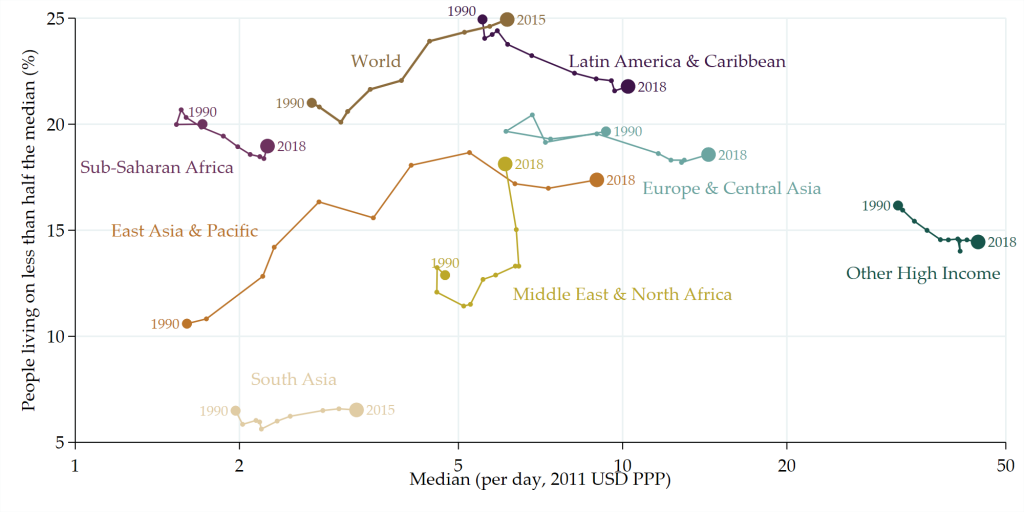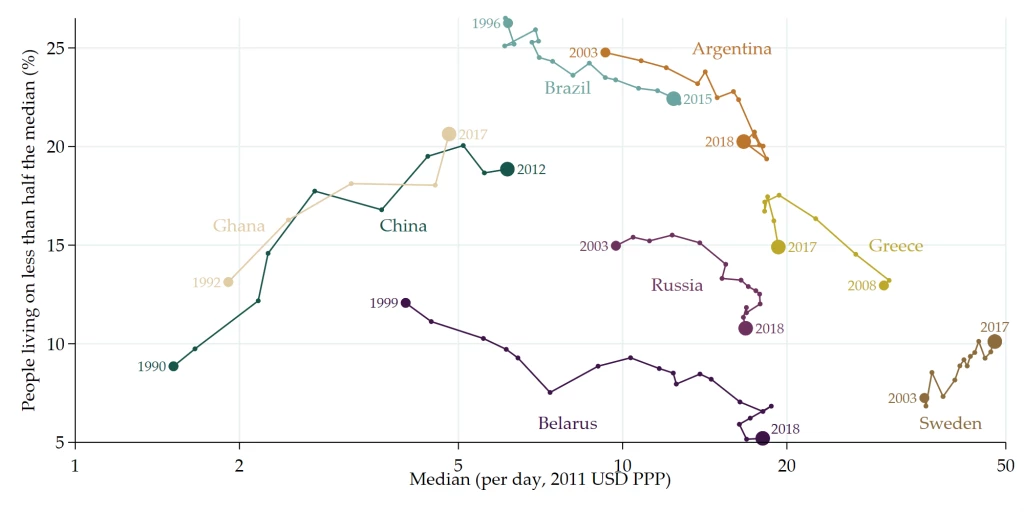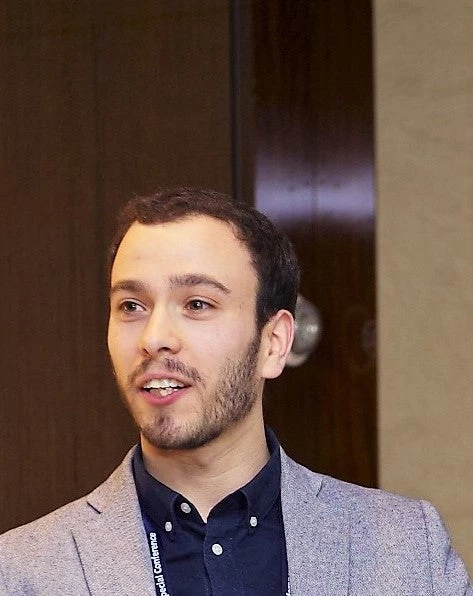Growth in median income is a frequently used measure of societal progress. In contrast to its more popular cousin, growth in mean income, or growth in GDP per capita, the median reveals the progress of the ‘typical’ person in society and is not vulnerable to what happens at the tails of the distribution. If only the top of the distribution sees progress, the mean will increase but the median will not. Yet the reverse also applies: the median is silent about what happens at the bottom of the distribution. Some countries might have large growth rates in the median but leave the poorest segments of societies behind. How can this aspect be captured as well when judging the progress of societies?
Indicator 10.2.1 of the Sustainable Development Goals is trying to do precisely that. It measures the proportion of people living on less than half of the median income. Having less than half of the median person is frequently used as a demarcation of relative poverty (see for example OECD). If a person has less than this threshold, participating fully in society can become challenging. If the median grows without an accompanying decline in the share of people living below half the median, the poorest are falling behind in relative terms.
The World Bank recently started reporting on 10.2.1, and you can find data for more than 150 countries on this indicator in the World Development Indicators. These are estimated using PovcalNet, the online tool provided by the World Bank for estimating global poverty.
So what do the data look like? Below are a couple of examples.
Figure 1: Progress in median incomes and share living on less than half the median, selected countries
In China and Ghana, growth in the median has been accompanied with a rapid rise in the proportion of people living below half the median, meaning that the poorest segments of society have been left behind. A similar pattern has occurred in Sweden, though from a much better starting point, both in terms of the median and in terms of the share of people living below half the median. In Argentina, Brazil, Belarus and Russia, growth in the median has been accompanied by a decline in the share living below half the median, suggesting broad-based progress has occurred. In Greece, following the financial crisis, decreases in the median were accompanied by a growth in the share of people living below half the median, meaning that living standards fell, and particularly so for the poorest. These changes in SDG 10.2.1 are consistent with changes in inequality, as measured for example using the Gini index, which increased in Ghana but fell in Argentina.
Using PovcalNet, we can likewise look at how things have evolved for regions and for the world as a whole. Here we are looking at the share of people living on less than half of the global or regional median. People who live on less than half of the global median do not necessarily live on less than half of the median of their country of residence. The world has seen rising median incomes but increases in the share living on less than half the median. This is likely because growth in Sub-Saharan Africa, the poorest region, has not followed the global trend, with median incomes only increasing from $1.7/day to $2.2/day from 1990 to 2018. The largest increases in median incomes are seen in East Asia & Pacific, but like was the case for China, this has been accompanied with an increase in the share living below half the median. In the Middle East and North Africa median incomes have stalled at the same time as the proportion of people living below half the median has increased.
Figure 2: Progress in median incomes and share living on less than half the median, globally and by region

These examples show that one can have increases in median incomes without an associated improvement in the bottom, and vice versa. Plutarch once said, "I don't need a friend who changes when I change and who nods when I nod; my shadow does that much better.” We can safely say that SDG 10.2.1 does not nod when the median nods. Median incomes and the share living on less than half the median do not necessarily follow each other, and often change independently. Yet, jointly, they complement each other by illustrating whether there is progress for the typical person and for the poorest of society. Perhaps SDG 10.2.1 should be the median’s new best friend?





Join the Conversation